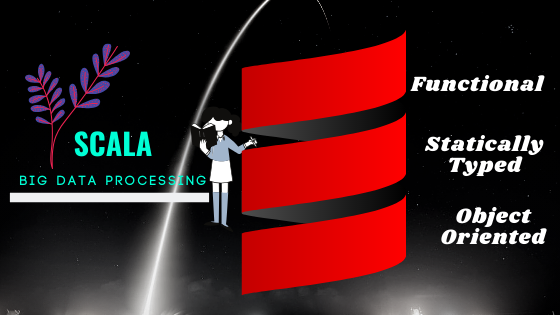
Scala is a versatile programming language that used for a wide range of applications, including data science and analytics. While Python are more commonly associated with data science, Scala has its own set of advantages and is gaining popularity in the field.
Here’s how Scala used in data science and analytics:
1. Conciseness:
Scala’s concise and expressive syntax allows data scientists to write clean and readable code. It supports functional programming paradigms, which can make data manipulation and transformation more elegant.
2. Performance:
Scala runs on the Java Virtual Machine (JVM), which means it can take advantage of Java’s performance optimizations. This can be crucial when dealing with large datasets or computationally intensive tasks.
3. Interoperability:
Scala seamlessly integrates with Java. Many popular data science libraries and tools, such as Apache Spark, are written in Scala or have Scala APIs. This allows data scientists to leverage these tools while still using Scala for their data analysis.
4. Concurrency:
Scala has excellent support for concurrent programming. This can be beneficial for parallelizing data processing tasks, which is essential for big data analytics.
5. Functional Programming:
Scala promotes functional programming, which is natural fit for many data science tasks, therefore you can use libraries like Cats or Scalaz for functional programming constructs.
6. Spark:
Apache Spark, one of the most popular frameworks for big data processing, provides a Scala API. This makes Scala a top choice for working with large-scale datasets and distributed computing.
7. Data Libraries:
Scala has several libraries and frameworks for data science and analytics, such as Breeze for numerical computing and ScalaNLP for natural language processing.
8. Machine Learning:
While Python more commonly used for machine learning due to libraries like scikit-learn and TensorFlow, Scala also has machine learning libraries like BIDMach and Smile, which can be useful for building models.
9. Data Visualization:
Although not as extensive as Python’s Matplotlib or R’s ggplot2, Scala has libraries like Breeze-viz and Vegas that used for data visualization.
10. Type Safety:
Scala’s strong type system can catch errors at compile time, reducing the likelihood of runtime errors in data analysis code.
11. Community and Resources:
While not as extensive as Python’s data science community, Scala has a growing community of data scientists and analysts. There are tutorials, forums, and libraries available to support data science work in Scala.
However, it’s worth noting that Python is still the dominant language for data science and analytics due to its extensive ecosystem of libraries and tools. Scala is a good choice if you already have expertise in the language or if you’re working in an environment that heavily relies on Scala, such as a company that uses pySpark extensively.
In summary, Scala can be a powerful choice for data science and analytics, especially when dealing with big data and distributed computing. Its performance, functional programming features, and interoperability with Java and Spark make it a compelling option for data scientists and analysts with Scala expertise. Please visit Scala Official Site:
You Can Contact Us To Get More Details About Scala for Data Science Training:
Locus Academy has more than a decade experience in delivering the training, Staffing, consulting on Scala for Data Science for corporates across the globe. The participants for the Staffing, consulting on Scala for Data Science are extremely satisfied and are able to implement the learnings in their on going projects.


